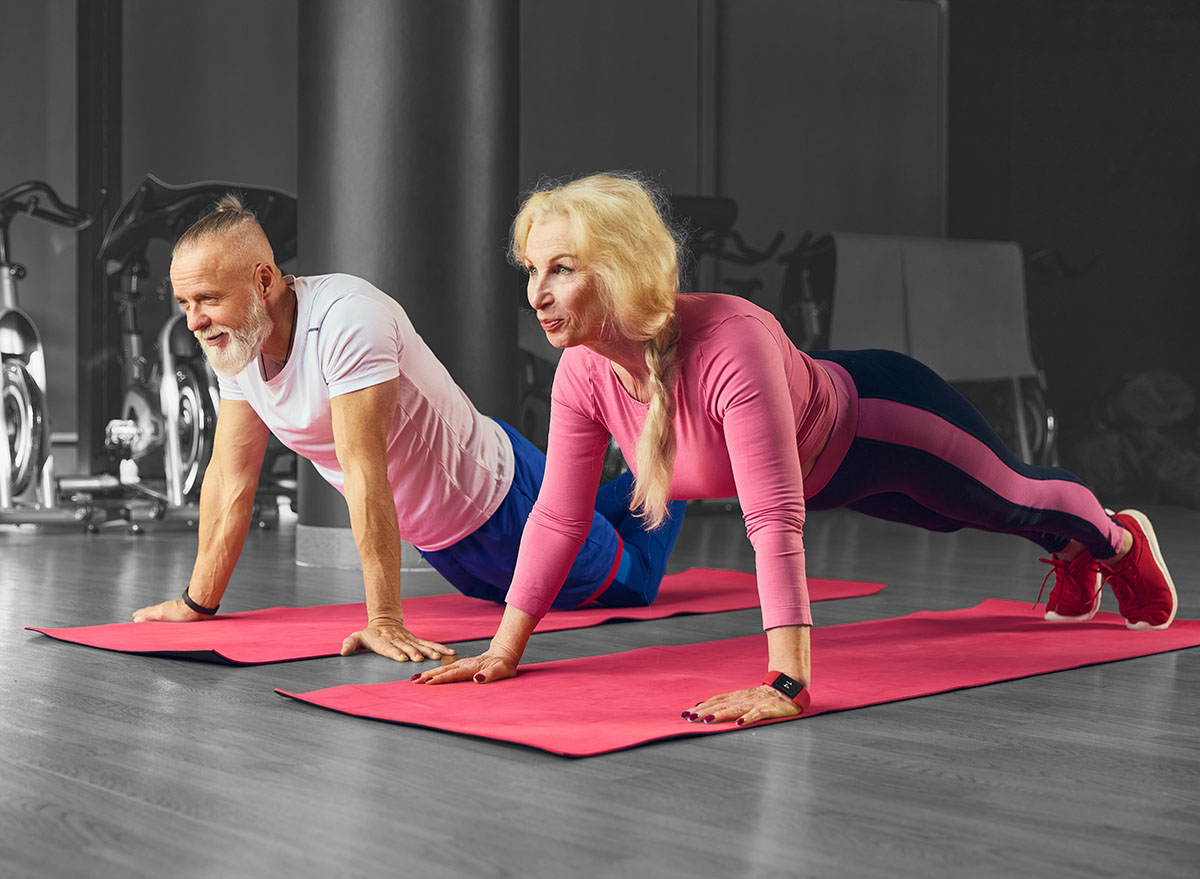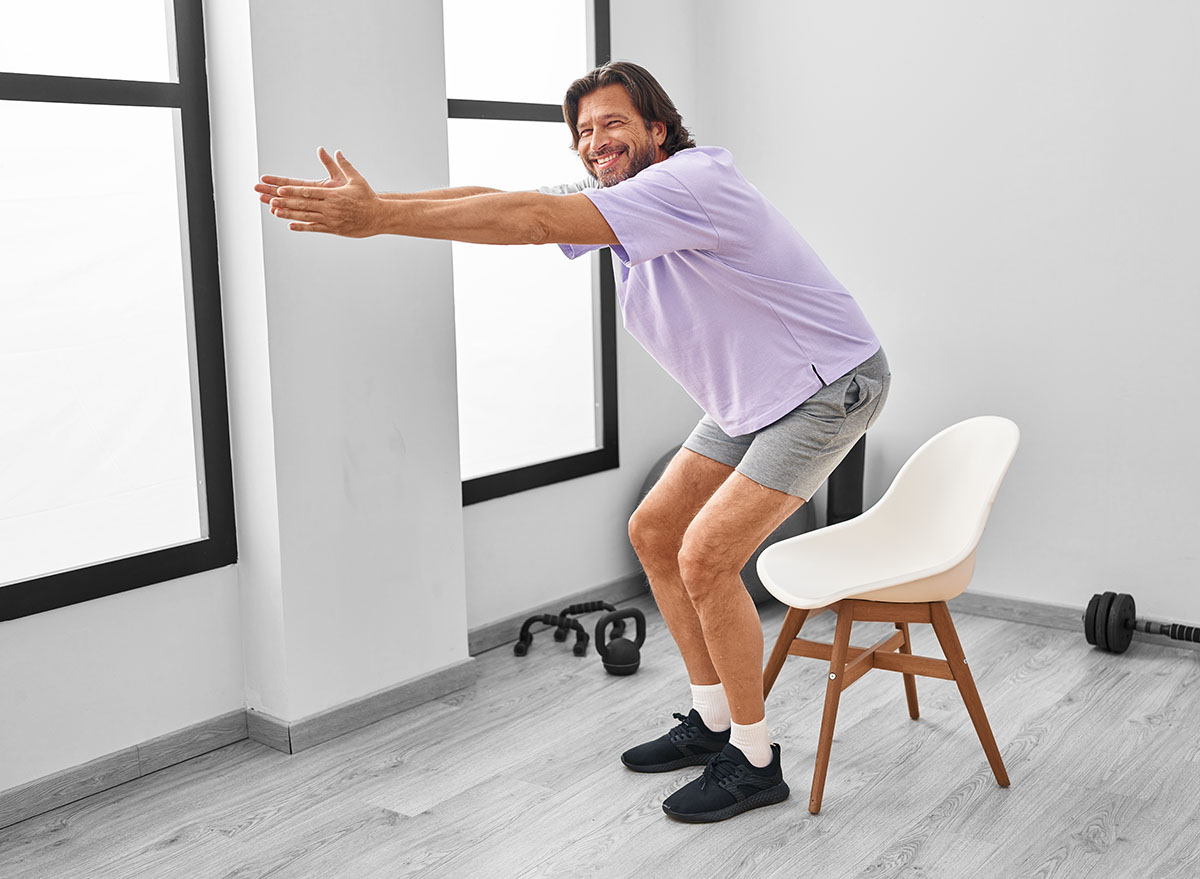Pushups are one of the best tests of real-world strength and fitness. This bodyweight exercise activates the core, chest, triceps, and shoulders—muscles that typically get weaker with age if not regularly challenged, says Theresa Rowe, nationally certified fitness pro experienced in personal training, group fitness, Pilates, and senior strength, and author of Shaped By Faith 40-Day Devotional.
“For adults over 45, being able to complete multiple pushups with proper form demonstrates strong shoulder stability, healthy joint mobility, and cardiovascular endurance. It also reflects how efficiently your body supports its own weight, a key marker of longevity and independence,” Rowe explains.
But just how many pushups should you be able to perform without rest after 45 as a sign of top-tier strength? Rowe spills the tea.
If You Can Complete This Many Pushups Without Stopping After 45, You’re Stronger Than Most
A solid general benchmark for upper-body strength is as follows:
- Women (aged 45 to 60): 15 to 20 consecutive classic pushups
- Men (aged 45 to 60): 25 to 30 consecutive classic pushups
“Completing pushups with control and alignment (no sagging hips or flared elbows) matters more than the total number,” Rowe stresses, “Even performing fewer reps with proper form is a strong indicator of muscular health and endurance.”
Keep in mind that progression through modified pushups—incline pushups, wall pushups, or stability ball pushups—boosts functional strength in a safe, efficient manner.
“The stability ball adds gentle instability, engaging the core and improving balance while taking pressure off the wrists and shoulders,” Rowe tells us. “I often use this version with my students—including those in their 70s and 80s—and it allows them to perform push-ups confidently while strengthening the entire body. Experience and consistency are bigger factors than gender—someone who trains regularly will outperform a sedentary peer at any age. The goal is steady improvement and proper technique, not comparison.”
How Pushup Performance Typically Changes With Age


As you age, lean muscle, joint mobility, and recovery ability naturally decline due to reduced physical activity and hormonal shifts.
“The chest, shoulders, and triceps can lose strength if they’re not trained regularly. Mobility restrictions in the shoulders and wrists may also limit range of motion,” Rowe explains. “Regular resistance and mobility training help maintain pushup ability, while proper recovery and flexibility exercises minimize stiffness and soreness.”














Leave a Reply